The article talks about currant pests and ways to combat them with chemical and folk remedies.
Currant bud mite
Description of the pest. A microscopic pest of currants that is difficult to see with the naked eye. It is clearly visible in the spring when the tick moves, but in infected kidneys it can only be seen under a microscope.
Mites look like very small white worms; they live, overwinter and feed in currant buds. In spring, at an air temperature of +5-6°C, females lay eggs inside the buds. After 7-14 days, larvae emerge from them and continue to feed inside the kidney. During the season, 3-4 generations of pests hatch, which in the spring go in search of a new habitat. One kidney can contain 3-5 thousand larvae and adults.
In the spring, during the period of leaf blossoming and bud protrusion, mites come out and infect neighboring healthy buds. At this time they can be seen. The migration period of ticks lasts 25-30 days, but they are especially en masse looking for a new food source during the flowering of black currants. Ticks can be spread to neighboring bushes by the wind, gardening tools, or on the gardener's clothing.
Nature of damage. It affects black currants, but it may also appear on red currants if the pest multiplies strongly.
The affected buds swell and become round, resembling a small head of Brussels sprouts in appearance. The more pests there are inside the bud, the more round it becomes. The affected buds become pale yellow in color and do not bloom in the spring, but dry out or rot. With severe infection of currants, diseased buds are noticeable by the end of summer. Yields of bushes damaged by mites are noticeably reduced.
Control measures. The difficulty in controlling the bud mite lies in the fact that the pest is well protected by the bud scales from the action of pesticides. During the flowering period of currants, when strays come out, the use of chemicals is extremely undesirable.
When swollen buds appear on the bushes, they are collected by hand in the fall or spring before flowering begins. In case of severe damage, the entire branch is cut out.If the entire bush is affected by the mite, then it is completely cut out; the young shoots that have grown over the summer will be free from the pest.
How to treat currants against bud mites.
- During the period of bud protrusion, the bushes are sprayed with a solution of colloidal sulfur or dispersed sulfur. Spraying is done once in the spring. Currants are processed on warm days, since sulfur preparations are effective only at temperatures above 20 °C.
- Spraying with Thiovit Jet. It contains sulfur and has moderate activity against ticks. The treatment is carried out when the leaves bloom.
- Cover the infected bushes with film, tying it at the base, and set fire to the sulfur bomb inside. Leave the film for 24-36 hours.
- Spraying bushes with Apollo. Acoricide is used during the period when ticks emerge from the kidneys. It destroys eggs and larvae and sterilizes adults, but does not kill them. The treatment is carried out once during the period of bud break.
- Neoron treatment. Contact action acoricide, used during the period when ticks emerge from the kidneys. Active against adults and larvae.
Preparations against gnawing and sucking pests have no effect on the kidney mite at all.
Folk remedies.
- During the period when the buds appear, the bushes are sprayed with garlic infusion. 150 g of crushed garlic is poured into 10 liters of water and the currants are processed. Treatment is carried out three times every 5-6 days.
- In early spring, before the buds swell, currants are doused with boiling water. This will not harm dormant buds, but mites sensitive to high temperatures die.
- Decoction of onion peels. 200 g of husks are poured into 3 liters of water and boiled for 15 minutes. Strain, bring the volume to 10 liters, spray the currants during the leaf opening period and after flowering.
Prevention.
- Planting varieties resistant to bud mite: Riddle, Pamyat Michurina, Sevchanka, Chudesnitsa, Alexandrina, Binar, Belorusskaya sweet, Zusha, Dobrynya, Oryol Waltz. The varieties Dachnitsa, Exotika, Gulliver, Green Haze, Chebarkul, and Lazy are not resistant to mites. Most varieties of red and white currants are resistant to bud mite. There are susceptible varieties, but these types of currants are affected by the pest much less frequently than black currants and only when there is a lack of food supply for the mite, or its spread throughout the area is very strong.
- Planting between bushes of garlic or perennial onions. Their smell repels the pest. Plants are planted in clumps and the plantings are left for the winter.
It is very difficult to fight the kidney mite. All bushes must be inspected in the fall and early spring for the presence of affected buds. If they are detected, immediately take measures to eradicate the pest.
Leaf gall aphid
Description of the pest. Small insects 2-3 mm long, yellow in color, have very delicate body coverings. The pest settles on the underside of leaves, where it forms colonies. It most often affects white and red currants, but can also attack black currants. The eggs overwinter, which the female lays on the bark of annual growths next to the buds. In the spring, larvae emerge from the eggs and feed on young leaves and tender, juicy green shoots. By mid-summer, the aphids develop wings and move from currants to herbaceous plants. By autumn, the aphids return to the currants, where the founding females lay eggs. Up to 10 generations of pests appear per season.
Nature of damage. A sucking insect that attacks the tops of shoots and young leaves of currants.Numerous red or brown bumpy swellings called galls appear on the upper side of the leaves. On the lower side, depressions appear in which single insects or colonies of aphids sit and suck the juice from young tissues. If the damage is severe, the leaves curl and dry out, and the pests move on to healthy leaves.
When massively infested, aphids can destroy young bushes. On mature fruit-bearing currants, the yield decreases sharply, the young growth is insignificant, thin and weak, and if severely damaged by aphids, it can dry out.
Control measures at the same time they are also preventive measures against aphids. Since many generations of pests appear over the summer, treatments are carried out 4-5 times per season, starting in early spring and ending in September. It is impossible to destroy aphids in one go.
Chemical means of controlling aphids.
- Spraying leaves from the underside with insecticides Inta-Vir, Iskra, Karbofos, Aktellik, Kinmiks, Aktara. The first treatment is carried out in the spring when the buds open, but before flowering begins; 2nd - after flowering; 3rd - after picking berries, 4th in mid-late August, when aphids return to currants.
- Treatment of currant bushes with the biological preparation Fitoverm; it is non-toxic and can be used during the fruiting period. Spraying is carried out throughout the season with an interval of 14-17 days.
After 2 times treatment with insecticides, if there is no further development of the pest, you can proceed to the use of folk remedies for currant protection.
Folk remedies for fighting aphids.
- Spraying young shoots and leaves with soda solution from the underside. The body of the pest is very tender and when it comes into contact with the treated leaves, it receives severe burns and dies.To prepare a solution, pour 3-4 tablespoons of soda into 5 liters of water and spray the leaves on the tops of the shoots from the bottom. You can simply wash the top of the shoots with the same solution.
- Hot pepper infusion. Finely chop fresh hot pepper, add water, bring to a boil and cook over low heat for 30-40 minutes, leave for 1-2 days. Dilute the resulting concentrate in 10 liters of water, add laundry soap. Spray currants when aphids appear. You can simply dilute a bag of dry red hot pepper in 200 ml of water and leave for 2 days. When preparing the concentrate, it is necessary to take protective measures, since when evaporating, pepper can cause irritation and burns to the eyes, respiratory tract and skin. The treatment is carried out wearing gloves, a mask and safety glasses.
- Dilute 10 ml of 5% iodine in 5-7 liters of water and spray the bushes when a pest appears.
Prevention consists in removing all weeds on the plantation and using natural enemies of aphids. Ladybugs feed on aphids; to attract them, daisies, tansy, and yarrow are planted in the dacha. Natural enemies also include lacewings.
It is extremely undesirable to cut off shoots damaged by the pest, since it is at their border that the fruit branches of red and white currants are laid.
Shoot aphid
Description of the pest. A small insect 1.1-1.8 mm long, light green in color. Affects red, white, black currants and gooseberries. Also, its colonies can appear on fruit trees. The eggs overwinter on the bark near the buds; in April-May, the larvae emerge from them and feed on the juice of the buds, young leaves and petioles. At the beginning of summer, winged female dispersers appear, which, flying away, infect neighboring plants. 6-8 generations appear per season.
Nature of damage. It affects the tops of the shoots, where young and succulent leaves and young growth are located. The leaves curl into clumps, inside of which there are colonies of aphids. As the branches grow, clumps of leaves remain in the middle of the shoots unless aphids damage the newly growing tips.
The development of annual growth slows down, leaf petioles become bent.
How to process currants. It is necessary to fight aphids systematically; one treatment is not enough.
- Spraying currant bushes with Fitoverm prevents the attack of the pest and causes the death of existing colonies. The period of protective action of the drug is 14-16 days.
- In case of a mass attack, Aktaru, Biokill, Kinmiks are used.
Folk remedies aphid control is very effective for moderate infestations. Shoot aphids on currants can be destroyed by using contact agents that cause damage to the integumentary tissues of the pest. Infusions are used for these purposes.
- 10 g of white mustard are infused in 1 liter of water for 2 days, then the concentrate is filtered. 200 g of infusion is diluted in 10 liters of water and sprayed on the currants, or simply dipped the tops of the shoots into the solution.
- Tobacco dust or shag. Pour 400 g of raw material into 5 liters of boiling water and leave for 48 hours. Strain, bring the infusion to 10 liters, add laundry soap as an adhesive. Treat damaged shoots from the underside. After 7-10 days the treatment is repeated.
Prevention. Attracting ladybugs and lacewings to the site, which feed on aphids.
Removing ants from the site that contribute to the spread of aphids.
Blackcurrant berry sawfly
Description of the pest. Damages black currant berries. The false caterpillar overwinters in a web cocoon in the ground.In the spring, during currant flowering, adult insects emerge. Females select the largest ovaries and lay one egg at their base. Inside the green berries, a false caterpillar emerges from the egg and feeds on the seeds without damaging the pulp. Then it gnaws through the peel, usually at the stalk, goes down on a cobweb and goes into the soil for the winter. One generation of pests appears per season.
Nature of damage. The false caterpillar eats the seeds, filling the berry with excrement. Damaged berries turn black earlier, grow larger and become ribbed from round. Such fruits stand out sharply against the background of still green berries. They are somewhat larger than the usual fruits of this variety and have an irregular shape. After the caterpillar leaves, the berries fall off or rot.
How to deal with this pest.
- Collection and destruction of browned and blackened ribbed berries during the period when the bulk of the fruit is still green.
- In case of massive damage, Agravertin is used to combat the sawfly. It paralyzes the insect, and after 1-2 days it dies. The treatment is carried out once when tying berries.
- Spraying currant bushes with Fitoverm during fruit set.
Prevention. If there is a pest in late autumn, dig up the soil under the bushes. The web cocoons end up on the surface and the false caterpillars overwintering in them die.
glass currant
Description. A very dangerous pest of currants. Damages all types of currants and gooseberries. Caterpillars overwinter in damaged branches. They are quite large, up to 2 cm long, white, with a beige head. At the beginning of May, the caterpillar gnaws its way out, leaving only a thin film of bark, and pupates. At the end of May, a butterfly flies out through this hole.It has glassy-transparent wings with black veins and an orange border, a wingspan of about 23 mm, the body itself is bluish-black. Butterfly years last 30-35 days. During this time, they lay up to 60 eggs on the bark at a height of 40-70 cm. Caterpillars emerge from the eggs, which gnaw through the bark and feed on the pith.
Nature of damage. The caterpillar eats away the core of the branches, gradually descending down to ground level. During the initial introduction of the pest, no signs of damage are observed, the branches look healthy and only when pruning can progress be noticed. In the second year, the leaves on the shoots are crushed, and there are fewer berries on the damaged branches. The shoots dry starting from the tops. They are very noticeable after currants bloom.
Pest control. Glassware is very dangerous. If you don’t start fighting it in time, the bushes may die.
- Pest control involves pruning damaged branches to healthy wood. All cut shoots must be burned as quickly as possible.
- During the flight of butterflies, the bushes are sprayed with Iskra and Actellik.
Folk remedies They are very effective in combating this pest; they can prevent the appearance of glassware on currants.
- During the flight of butterflies, small containers with blackcurrant jam are hung on the bushes. This helps catch butterflies.
- During the mass summer of butterflies, the bushes are sprayed with infusions that have a strong odor (onion, garlic, orange peels, tomato shoots, pine needles). You can spray with tar (1 tsp per 5 liters of water). Unfamiliar smells repel the pest.
Prevention.
- Using healthy planting material.You cannot take layerings and cuttings from bushes where glass beetle was noticed.
- Do not buy seedlings with withered leaves or drying tops.
- Removing all diseased and damaged branches.
If the pest is severely damaged, the currant bushes dry out. To save the variety, all branches are cut to ground level and if the roots are viable, they will produce young shoots.
Gooseberry moth
Description of the pest. Large moth, the front pair of wings are light brown, the back pair is light ash. During the day she hides in the bushes, at dusk and at night she flies. The caterpillars are also quite long - 10-11 mm, at first they are yellow-white with a black head, and then turn green. The caterpillars go into the ground to a depth of 3-4 cm, where they pupate. The overwintering stage is the pupa. At the end of April (in the southern regions 2 weeks earlier), butterflies fly out of the pupae, the flight of which lasts 1-1.5 months. Females lay eggs inside inflorescences, on ovaries and leaves.
One generation is born per season. Damages red and white currants and gooseberries. It is less common on black currants, sometimes attacks raspberries.
Nature of damage. The caterpillar is very voracious, damaging berries by eating seeds and pulp. Then it moves on to the next berry. A thin web stretches from fruit to fruit. If protective measures are delayed, the pest weaves a cocoon of 10-12 damaged berries. The berries in the cocoon gradually rot or dry out. If you stir up the cocoon, you can find a caterpillar in the juiciest berry.
Control measures.
- Collection and destruction of spider cocoons. The faster the pests can be collected, the less crop loss will be. The collected cocoons are burned or poured with boiling water.
- Immediately after flowering, the bushes are sprayed with insecticides (Iskra, Actellik, Karbofos).
- Immediately after flowering, currants are treated with the systemic-contact insecticide Senpai. The drug has proven itself as a means of combating various types of pests.
Folk remedies for combating moth.
- Newspapers, cardboard, film, anything that prevents butterflies from coming to the surface are laid out under the bushes. After flowering, the protective material is removed.
- 7-10 days before flowering begins, dust powder is sprinkled on the ground around the bushes. You can water it with a 12% dust solution.
- Pollinating bushes with tobacco dust.
- Infuse 10 g of elderberry in 1 liter of water for 48 hours, then strain. Pour 20 ml of the drug into 700-800 ml of water and treat the bushes.
All spraying with both chemical and folk remedies is carried out in the evening, when butterflies are most active.
Prevention.
- Digging the ground under the bushes to 10-15 cm.
- In autumn, the ground under the bushes is mulched with peat or simply an additional layer of earth 15-17 cm high is poured. The soil is taken from other parts of the garden where there are no pupae. In the spring, the butterfly will not be able to come to the surface and will die. At the end of flowering of gooseberries and currants, the bushes are unplanted.
Gooseberry moth
Description of the moth. Another common currant pest. Damages gooseberries and black currants. In addition, it can attack apple, pear, plum, and bird cherry trees.
The butterflies are very large, elegant with yellow and black spots and stripes. The caterpillars are large, up to 4 cm long, grayish-yellow with characteristic 4-angled spots. The caterpillar overwinters in a cobweb cocoon under bushes in fallen leaves. In the spring, it emerges from the cocoon and damages the buds and young leaves, then pupates, attaching an arachnoid cocoon to the leaves.2 generations of pests are born per season
Nature of damage. Caterpillars eat leaves, gnawing large holes in them or eating them along the veins. In the spring, the buds are severely damaged and do not bloom, but dry out. If no action is taken, they can eat almost all the leaves on the bush.
What to spray bushes with. If you start fighting the moth in time, you can avoid unpleasant consequences.
- Spider cocoons are collected and destroyed on and around bushes.
- Treatment with biological products, Fitoverm, Bitoxibacillin, Lepidocid. Currants (and other shrubs where the pest is spotted) are sprayed when the leaves bloom and in early July, when the second generation of caterpillars hatches.
- In case of severe spread, when soft means of control are insufficient, spray with insecticides: Iskra, Karbofos, Biokill.
Folk methods of struggle. If the number of pests is small, you can deal with them using traditional methods.
- Spraying with infusion of tobacco dust.
- Spraying with a decoction of tomato tops. 1 kg of tops, fresh or dried, pour 1 liter of water, boil for 30 minutes, leave for 2 hours. The resulting concentrate is brought to 10 liters and the bushes are sprayed.
- Treatment with mustard infusion.
Traditional methods are used for both control and prevention. The smell repels butterflies, and the substances contained in the products have a burning effect on the tender abdomen of the caterpillars and they die.
Rose leaf roller
Description of the pest. Polyphagous pest. Damages many garden crops, including currants.
The butterflies are medium in size, the front wings are yellow with small brown spots, the hind wings are light brown.The caterpillars are green and brownish-green. The eggs overwinter on the bark under the shield. In the spring, caterpillars emerge from them, feed for 25-40 days, then pupate. The mass flight of butterflies occurs in June and early July; they lay up to 250 eggs. 1 generation develops over the summer.
There are other types of leaf rollers, all of which are usually omnivorous and can damage currants.
Nature of damage. The photo shows how the caterpillars twist the leaf, fastening the edges with a web, live in it and come out of it to feed on neighboring leaves, buds, flowers and fruits. During the season, the pest changes its shelter several times, twisting new leaves into a tube on the bush. It pupates in the same leaf.
Wounds of varying sizes and depths appear on damaged fruits.
Damaged flowers acquire a reddish tint and fall off without setting fruit.
Ways to fight for all types of leafrollers are the same.
- Collecting and burning rolled leaves.
- Use of insecticides: Karbofos, Alatar, Iskra, etc.
Measures to combat leaf rollers should affect all fruit and berry plantings, since it easily moves from one type of shrub to another.
Folk remedies for pest control. As protective measures, products with a strong odor and contact agents that act on caterpillars are used.
- Wormwood decoction. Pour 1/2 bucket of finely chopped fresh wormwood into 10 liters of water and leave for 48 hours. Then boil the infusion for 30 minutes, cool, increase the volume to 10 liters and treat trees and shrubs. Instead of fresh wormwood, you can take dry powder 700-800 g.
- Spraying with tobacco infusion.
- Decoction of tomato tops.
- One of the effective measures for catching butterflies is sugar syrup or fermented currant jam.0.7-1 liter jars are filled 1/3 with bait and hung on bushes at a height of at least 1.1-1.3 m. The next day, the jars with the caught butterflies are removed. You can use bread kvass instead of these ingredients.
Prevention.
- Early spring “blue” spraying of the garden with the addition of insecticides to the solution.
- Regular inspections of plantings for the presence of various pests.
- Spraying the garden in spring when the snow melts and in autumn when the air temperature is not higher than 8°C, with a concentrated solution of urea (700 g / 10 l of water).
Gall midges
Description of the pest. Gall midges are small insects, there are 3 types: leaf, shoot and flower. The larvae overwinter under bushes in the soil at shallow depths. During the period of bud protrusion, adult insects fly out - flower gall midge mosquitoes; at the beginning of flowering, leaf gall midges appear, and during flowering, shoot gall midges appear. Mosquitoes fly in the lower part of the bush and lay eggs on flowers, on leaves and in cracks in the bark. Yellowish larvae emerge from them and feed on plant sap.
Nature of damage. The larvae suck juice from damaged tissues. Swellings (galls) or wrinkling appear on the affected organs.
The leaves acquire a wavy surface, they are wrinkled and slightly curled, and galls appear on them. Damage to leaves by gall midges is very similar to that of aphids. But these are different pests; some types of gall midges parasitize aphids.
Affected flowers do not set. They acquire a reddish color, curl and crumble.
On shoots, the larvae live under the bark, forming colonies there. Small galls first form on the bark, and then it dies. The shoots stop growing and dry out.
When the pest spreads massively, the bushes are severely suppressed, the branches dry out and die, and the yield disappears. Control measures must be taken immediately, otherwise plantings may be lost.
How to deal with a pest.
- Flowers infested with gall midges are very difficult to identify, but leaves and affected shoots are removed.
- Treatment with broad-spectrum insecticides. The same solutions are used to water the ground around the currants to prevent mosquitoes from flying out.
Folk remedies.
- Cover the soil under currant bushes during the summer of mosquitoes with newspapers, film, agrofibre.
- Pollination or spilling the ground under the bushes with ash or infusion of tobacco dust.
Prevention.
- Preventive spraying of currants with insecticides before flowering and immediately after it.
- Mulching the soil around the bushes with peat or sawdust.
The most important thing when fighting gall midges is to recognize them in time. In the initial stages, it is quite easy to deal with it.
It should be remembered that if any pest appears after fruit set, it should be combated only with biological products.
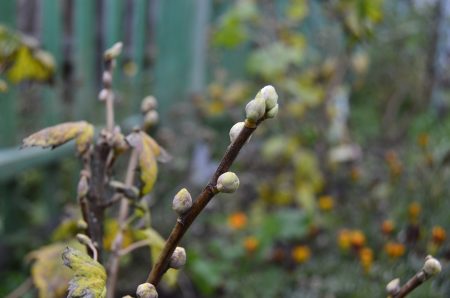
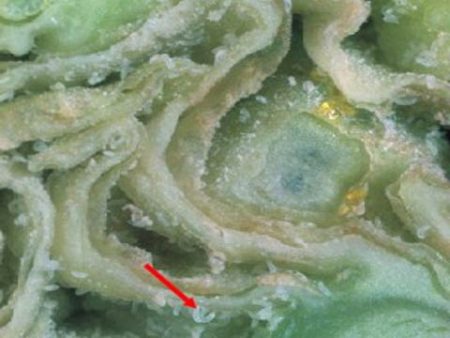
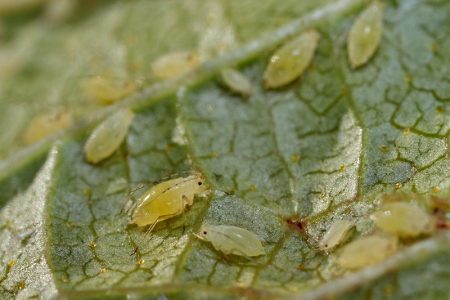
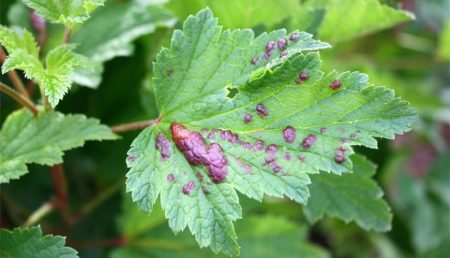
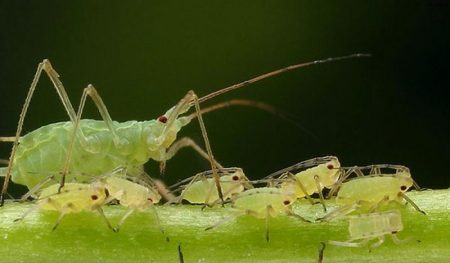
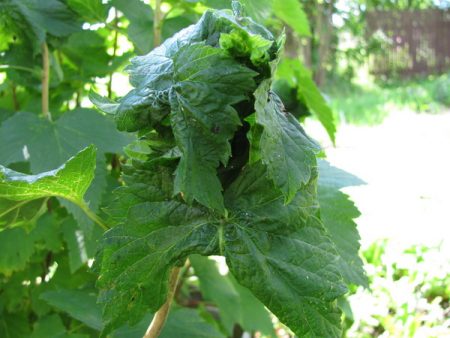
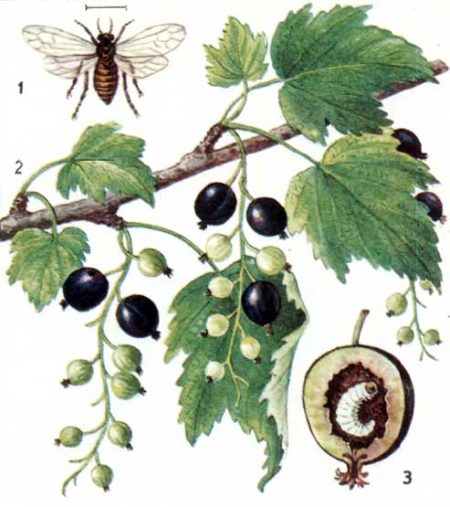
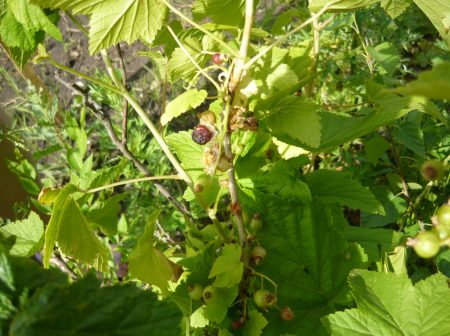
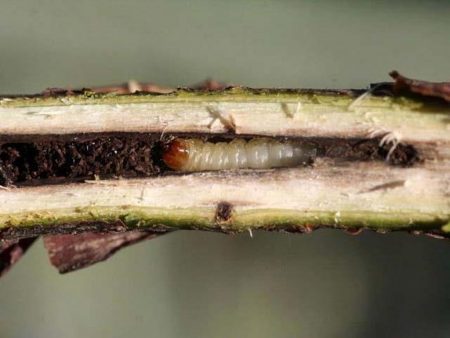
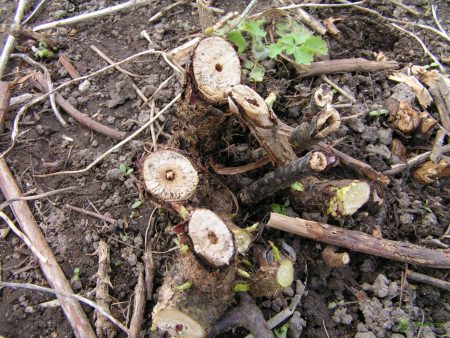
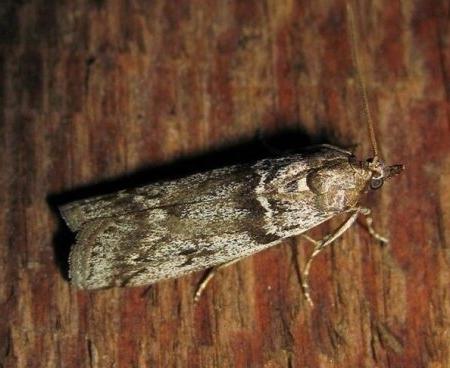

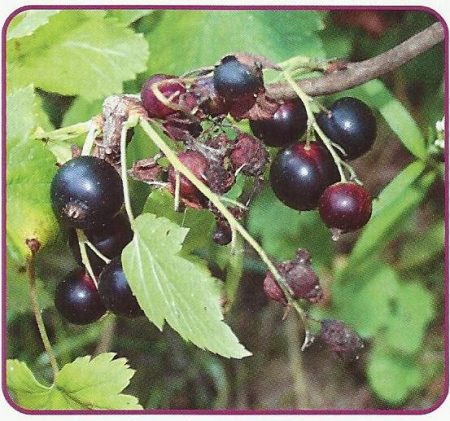
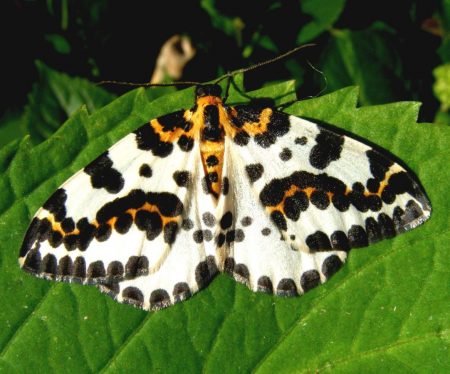
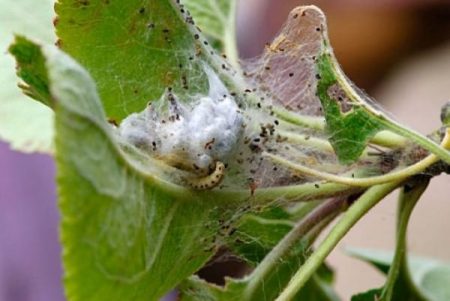
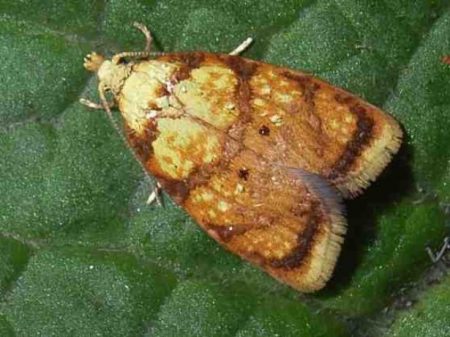
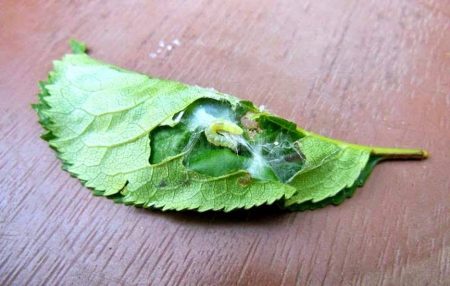
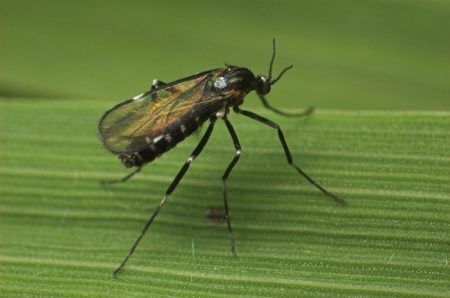
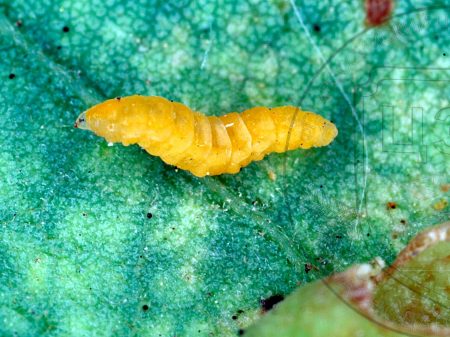


 CUCUMBERS NEVER GET SICK, I'VE BEEN USING ONLY THIS FOR 40 YEARS! I SHARE A SECRET WITH YOU, CUCUMBERS ARE LIKE THE PICTURE!
CUCUMBERS NEVER GET SICK, I'VE BEEN USING ONLY THIS FOR 40 YEARS! I SHARE A SECRET WITH YOU, CUCUMBERS ARE LIKE THE PICTURE! You can dig a bucket of potatoes from each bush.Do you think these are fairy tales? Watch the video
You can dig a bucket of potatoes from each bush.Do you think these are fairy tales? Watch the video
 How our fellow gardeners work in Korea. There is a lot to learn and just fun to watch.
How our fellow gardeners work in Korea. There is a lot to learn and just fun to watch. Eye trainer. The author claims that with daily viewing, vision is restored. They don't charge money for views.
Eye trainer. The author claims that with daily viewing, vision is restored. They don't charge money for views. A 3-ingredient cake recipe in 30 minutes is better than Napoleon. Simple and very tasty.
A 3-ingredient cake recipe in 30 minutes is better than Napoleon. Simple and very tasty. Therapeutic exercises for cervical osteochondrosis. A complete set of exercises.
Therapeutic exercises for cervical osteochondrosis. A complete set of exercises. Which indoor plants match your zodiac sign?
Which indoor plants match your zodiac sign? What about them? Excursion to German dachas.
What about them? Excursion to German dachas.